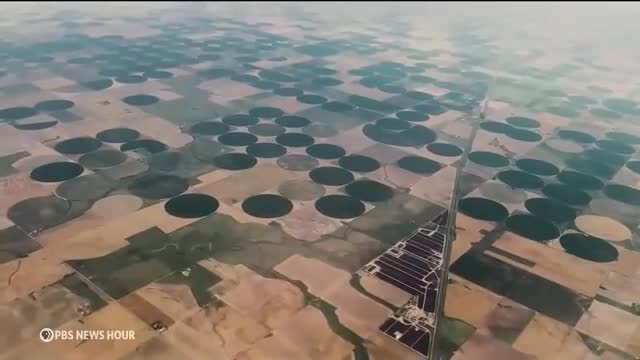Ogallala Aquifer crisis threatens livelihoods in Kansas

This article was created by AI summarizing key points discussed. AI makes mistakes, so for full details and context, please refer to the video of the full meeting. Please report any errors so we can fix them. Report an error »

The Ogallala Aquifer, a crucial water source for Western Kansas and parts of eight states, is facing significant depletion, particularly in Texas, Oklahoma, and western Kansas. This alarming trend poses a serious threat to the region's economy, which heavily relies on water-intensive crops like corn.
Brownie Wilson from the Kansas Geological Survey has reported drastic declines in water levels, with some wells dropping over 100 feet since 2001. He emphasizes that current water usage practices are unsustainable, as the aquifer cannot support the increasing pumping demands. The aquifer's structure resembles an \"egg carton,\" leading to uneven depletion across different areas, with some regions experiencing more severe declines than others.
Farmers like Peterson in southwest Kansas are feeling the impact firsthand, having abandoned over half of their wells due to impractical pumping conditions. He expresses concern not only for his livelihood but also for the broader community, which is suffering as water resources dwindle.
The overdraft of the Ogallala Aquifer is attributed to various factors, including the expansion of farmland that requires substantial water resources. Climate scientist Peter Glick highlights that the agricultural practices in the region are a significant contributor to this crisis. As the aquifer continues to decline, the future of farming and community sustainability in Western Kansas hangs in the balance.
Brownie Wilson from the Kansas Geological Survey has reported drastic declines in water levels, with some wells dropping over 100 feet since 2001. He emphasizes that current water usage practices are unsustainable, as the aquifer cannot support the increasing pumping demands. The aquifer's structure resembles an \"egg carton,\" leading to uneven depletion across different areas, with some regions experiencing more severe declines than others.
Farmers like Peterson in southwest Kansas are feeling the impact firsthand, having abandoned over half of their wells due to impractical pumping conditions. He expresses concern not only for his livelihood but also for the broader community, which is suffering as water resources dwindle.
The overdraft of the Ogallala Aquifer is attributed to various factors, including the expansion of farmland that requires substantial water resources. Climate scientist Peter Glick highlights that the agricultural practices in the region are a significant contributor to this crisis. As the aquifer continues to decline, the future of farming and community sustainability in Western Kansas hangs in the balance.
View full meeting
This article is based on a recent meeting—watch the full video and explore the complete transcript for deeper insights into the discussion.
View full meeting